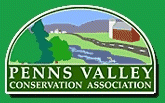GPS Scavenger Hunt
Standards: 4.8 Humans and the Environment
Duration: 30 to 60 minutes
Setting: Outside – General, Forest, Stream, Wetland, Farm
Vocabulary: gravity, natural resource, global positioning satellites, triangulation
Summary: Students learn how GPS systems work and how to use them, and then go on a scavenger hunt.
Objectives: Students will gain a deeper understanding of how satellites transmit data to Earth, and how to use this technology in an advantageous manner.
Materials: GPS units (4-5) [Contact kgalligan@pennsvally.org for more information], containers to put questions and coordinates in, print out of questions, map identifying all locations
Background:
You have probably heard the term “natural resources” used before, but you may not have heard it in reference to gravity. Gravity is a force in nature that causes objects with mass to attract one another. The planet, for example, is a massive object, and as a result other smaller objects are attracted to it and can never get too far away from it before the attraction pulls it back. This is why things always fall when you throw them up in the air!
We can use the force of gravity to do various things, such as store water behind damns and use it to make electricty. One of our major uses of gravity, though, is to communicate information, to watch TV, and to take pictures of the earth. We do all of these things by using the force of gravity to power satellites.
Satellites are released out into space where there is little to no friction. As a result, all that we need to do is put a satellite on top of a rocket and push the satellite into space to send it going around in an orbit around Earth. We have to be careful to get the right amount of speed for this–to little and the satellite will just fall back to earth, but too much and it will continue to fly off into outer space. This proper speed is called “orbit velocity.”
One other primary use of satellites is to track things on the surface of the earth. The satellites used for this are called “Global Positioning Satellites.” If you have a receiver to get a signal on earth, like a GPS unit, you can use 3 satellites to pin-point your position by a process called “triangulation.” One satellite contacts you and places you on an imaginary sphere with the satellite at the center. Then, another satellite contacts you and places you on a different imaginary sphere. These spheres intersect, and this intersection is used in locating your position. A third satellite also places you in a third imaginary sphere. The place where all three of these spheres intersect is your location! The more satellites you can reach at once, the more accurate your position will be, but you need at least three to get a reading.
Procedure:
Warm Up:
Ask students if they have ever used Google maps or another positioning device. Ask them if they have ever used a GPS itself. Can they explain how it works? Ask students to name times when having a GPS would be helpful.
Activity:
Separate students into small groups based on the number of GPS units there are available. Explain that each group will get a list of GPS coordinates and a GPS unit. They will then track down each area and search for a container that holds a questions about that specific area. Once they get to that location and find the container they should take one question sheet out and put the rest in the container back where they found it. They must answer the (multiple choice) question correctly to get the next GPS coordinate. If they choose an incorrect answer they will be directed to a “Wrong Answer Zone,” and must then select a different answer and try again. The first team to finish all of the questions wins.
GPS Use: The screen setting that initially comes up is the only one students will use. It shows the satellites orbiting in the sky and shows how strong the signal is by small black boxes on the screen. They want at least 4 boxes to be black to be able to have triangulation. They should then look at the coordinates and walk around until the coordinates from the multiple choice question match those on the screen.
At the end, gather students back together and go over the answers to the questions.
Assessment:
Ask students to explain why a GPS can be a useful tool in different situations. How is gravity being put to work to help make this a possibility?
Enrichment:
Have students work in groups to create a new scavenger hunt themselves, where each group chooses their own location to hide a box with worksheets or prizes inside.
Search to see if there are any geocaching opportunities in the area and then do this with students.


Leave a comment